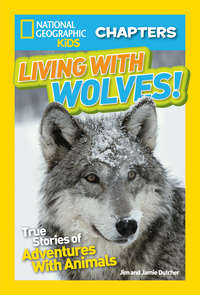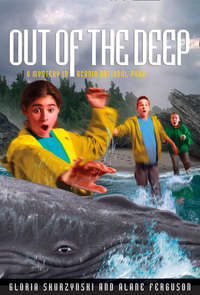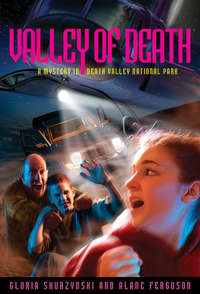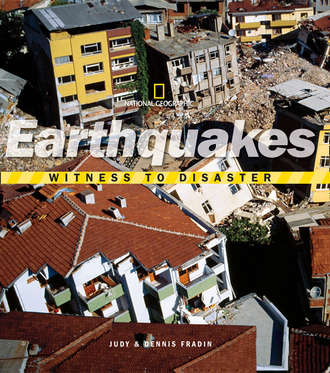
Полная версия
Witness to Disaster: Earthquakes

Earthquakes
WITNESS TO DISASTER
“It is amazing how the Earth tells us that it is alive, that it moves and changes like any living organism.”
Dr. Alberto M. Lopez-Venegas, United States Geological Survey
Earthquakes
WITNESS TO DISASTER
JUDITH BLOOM FRADIN & DENNIS BRINDELL FRADIN

Text copyright © 2008 Judith Bloom Fradin and Dennis Brindell Fradin
Published by the National Geographic Society. All rights reserved. Reproduction of the whole or any part of the contents without written permission from the National Geographic Society is strictly prohibited.

Founded in 1888, the National Geographic Society is one of the largest nonprofit scientific and educational organizations in the world. It reaches more than 285 million people worldwide each month through its official journal, NATIONAL GEOGRAPHIC, and its four other magazines; the National Geographic Channel; television documentaries; radio programs; films; books; videos and DVDs; maps; and interactive media. National Geographic has funded more than 8,000 scientific research projects and supports an education program combating geographic illiteracy.
For more information, please call 1-800-NGS-LINE (647-5463) or write to the following address: National Geographic Society 1145 17th Street N.W.
Washington, D.C. 20036-4688
U.S.A.
Visit us online at www.nationalgeographic.com/books
For information about special discounts for bulk purchases, please contact National Geographic Books Special Sales at ngspecsales@ngs.org
For rights or permissions inquiries, please contact National Geographic Books Subsidiary Rights: ngbookrights@ngs.org
Fradin, Judith Bloom.
Earthquakes: witness to disaster / by Judy and Dennis Fradin.
p. cm.—(Witness to disaster)
Includes bibliographical references.
1. Earthquakes—Alaska—Anchorage region. I. Fradin, Judith Bloom. II. Fradin, Dennis B. III. Title.
QE535.2.U6F68 2008
551.22—dc22
2007044164
ISBN: 978-1-4263-0979-3
National Geographic Society
John M. Fahey, Jr., President and Chief Executive Officer;
Gilbert M. Grosvenor, Chairman of the Board;
Tim T. Kelly, President, Global Media Group;
Nina D. Hoffman, Executive Vice President; President, Books Publishing Group
Staff for This Book
Nancy Laties Feresten, Vice President, Editor-in-Chief of Children’s Books
Amy Shields, Executive Editor
Bea Jackson, Director of Design and Illustration
Jim Hiscott, Art Director
Lori Epstein, Illustrations Editor
Jean Cantu, Illustrations Specialist
Carl Mehler, Director of Maps
Jennifer A. Thornton, Managing Editor
Priyanka Lamichhane, Assistant Editor
R. Gary Colbert, Production Director
Lewis R. Bassford, Production Manager
Maryclare Tracy, Nicole Elliott, Manufacturing Managers
Photo Credits
cover, Reza / NG Image Collection; back, Emory Kristof / NG Image Collection; spine, Bill Roth/ Anchorage Daily News/ Associated Press; 2-3, James Balog/Getty Images; 5, Koji Sasahara/ Associated Press; 6, Ward W. Wells/ Anchorage Museum at Rasmuson Center; 9, Pratt Museum; 10, Stan Wayman/Life Magazine, Copyright Time Inc./ Time Life Pictures/Getty Images; 11, Central Press/Getty Images; 12, Chiaki Tsukumo/ Associated Press; 13, Museum of Fine Arts, Boston. Reproduced with permission. c2000 Museum of Fine Arts, Boston. All Rights Reserved; 15, NG Image Collection; 16 up left, Susan Sanford/ NG Image Collection; 16 up right, Susan Sanford / NG Image Collection; 16 lo left, Susan Sanford / NG Image Collection; 16 lo right, Susan Sanford / NG Image Collection; 18, Ann Johansson/ Associated Press; 19, Kashuhiro Nogi/ AFP/ Getty Images; 21, J.R. Stacy/ USGS; 22, Library of Congress; 23, National Information Service for Earthquake Engineering, EERC, University of California, Berkeley; 25, USGS; 26, Newspaperarchive.com; 27, Library of Congress; 28, J. B. Macelwane Archives, Saint Louis University; 29, USGS; 31, T. Kuribayashi, National Information Service for Earthquake Engineering, EERC, University of California, Berkeley; 32, Chris Sattlberger/ Photo Researchers, Inc.; 33, Banaras Khan/ AFP/ Getty Images; 35, Mike Poland/ USGS; 37, Commander Emily B. Christman/ NOAA; 38, Chuck Nacke//Time Life Pictures/Getty Images; 39, C.E. Meyer/ USGS; 40-41, Farzaneh Khademian/Corbis; 42, Jim Holmes/ Axiom/ Getty Images; 43, Reza / NG Image Collection; 44, Keystone/ Getty Images;
Version: 2017-07-06
CONTENTS
Introduction: Japan Earthquake
Chapter 1: “The Ground Would Not Stop Shaking”: Alaska, 1964
Chapter 2: “As If a Giant Foot Had Stepped On It”: Why Does the Earth Quake?
Chapter 3: “The Heart of This Old Earth Was Broken”: Famous Earthquakes
Chapter 4: “Only a Matter of Time”: Predicting and Preparing for Earthquakes
Glossary
Bibliography
Further Reading and Research
Interviews by the Authors
Acknowledgments
Index
Introduction: Japan Earthquake
As one of the world’s most earthquake-prone countries, Japan is well prepared for such disasters. Buildings on the island nation are designed to withstand large earthquakes. Schoolchildren are taught how to protect themselves when they occur. Drills are held regularly to make sure citizens react safely when the ground shakes.
But nothing could prepare the Japanese people for what occurred on March 11, 2011. At 2:46 on that Friday afternoon, giant slabs of the Earth’s crust nearly 200 miles (320 kilometers) long and 100 miles (160 kilometers) wide fractured and were thrust beneath Japan’s northeast coast. The result was the fourth biggest earthquake to strike our planet over the past century. It was so powerful that it pushed northeastern Japan 13 feet (4 meters) to the east and dropped the island’s coastline two feet. Buildings toppled as if they were children’s toys, and people were buried beneath the rubble.
But the quake wasn’t done with Japan. The upheaval lifted the sea floor and sloshed the ocean water, spawning giant waves known as a tsunami. Walls of water moving as fast as a jet plane struck the Japanese coast and pounded it with waves as tall as a three-story building.
The earthquake and the tsunami waves it created killed an estimated 25,000 people. In addition, the disaster damaged a cluster of nuclear reactors, leaving survivors without electricity. Leaking radioactive fumes from the reactors forced tens of thousands of people to evacuate the area. Many fear that radioactive contamination from the reactors may prove harmful to people who lived nearby.
It could take years for Japan to recover from this disaster. As spectacular as it was, the Japanese earthquake was just one of many thousands of large earthquakes that have rocked our planet and that will continue to do so as long as there is an Earth.
CHAPTER 1
“The Ground Would Not Stop Shaking”
Alaska, 1964
“I turned and watched my house squirm and groan, as though in last mortal agony. It was as though someone had engaged it in a gigantic taffy pull, stretching it, shrinking it, and twisting it.”
Robert B. Atwood, then editor and publisher of the Anchorage Daily Times
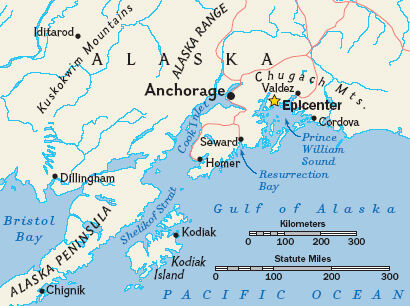
The afternoon of March 27, 1964, seemed to be shaping up as a pleasant time for thousands of Alaskans. In Anchorage and other cities, people were heading home from work, preparing dinner, or getting ready for Easter weekend. But then something happened to make that Good Friday a day that Alaskans will never forget. At 5:36 p.m., 13 miles below ground in southern Alaska, massive blocks of rock suddenly shifted and snapped, causing a gigantic earthquake.
“I was next door at my friend Raymond’s house when it started,” Michele Doran recalls about that afternoon. Along with nearly 50,000 other people, eight-year-old Michele lived in Anchorage, Alaska’s biggest city. “We were watching cartoons and dancing. We had experienced lots of small quakes before, so at first we weren’t scared.”
The shaking quickly intensified. “It got a lot worse,” says Michele. “The TV fell and broke. Soon the house was tipping. I couldn’t stand up to get out of the house. I had to crawl on my hands and knees. Then I couldn’t even move but could only lie flat on the floor.
“You know that really loud sound when a jet airplane slows down and reverses its engines? That’s what the earthquake sounded like.”
Michele Doran, who was eight years old and living with her family in Anchorage, Alaska, at the time of the quake
“It came in waves. It would ease up a little, then there’d be a terrible, loud, rolling sound which meant that the really bad shaking was starting again. It happened over and over and over: the loud sound, then the shaking.”
Three hundred miles away in the town of Old Harbor, on Kodiak Island, Viola Simeonoff was having a similar experience. She was at her friend Rundina’s house. “Rundina’s older sister told us we had to get out of the house, but I couldn’t move because the floor was moving funny. Finally I got outside. The ground would not stop shaking—it went on it seemed like forever. When I looked up at the nearby mountainsides, the snow was coming off of them, like giant snowballs rolling down. When it finally stopped, Rundina’s dad told me to go home, that lots of water would be coming.”
During the five minutes it lasted, the quake caused enormous damage across 50,000 square miles of Alaska. Giant cracks split the ground. Landslides and avalanches hurled huge amounts of dirt, rocks, ice, and snow down mountain slopes. Buildings swayed and fell. Railroad tracks twisted. Bridges collapsed. Cars bounced up and down as if on trampolines. Twenty people lost their lives. Three-quarters of the city of Anchorage was damaged or destroyed.
But the Good Friday Earthquake held another danger. As the father of Viola’s friend warned, lots of water would be coming.
Earthquakes that originate beneath or near the ocean can disturb the water, creating tsunamis. These waves, which travel at speeds of more than 500 miles per hour, are not very tall when out at sea. As they approach shore, however, tsunamis pile up into giant walls of water that flatten everything in their path.
WITNESS TO A TSUNAMI
“Dad was the last one to get up on the roof. Just as he did, the wave hit. It was enormous. The wave destroyed everything in the neighborhood except the house we were on. It was ripped off the foundation and we were sent spinning around in the water as we hung on to the roof shingles. I felt like I was in the house in The Wizard of Oz. I saw our car float by. We swirled around in the water for 15 or 20 minutes until the house got stuck in some trees about a mile from where we started.”
Linda McRae MacSwain, then 15 years old, recalling how she and her family survived the tsunamis on a rooftop in Seward, Alaska
Alaska’s Good Friday Earthquake, which originated near an ocean inlet named Prince William Sound, generated huge tsunamis. A few minutes after the quake, one tsunami approached Valdez, Alaska. The 30-foot wave ripped away a dock and drowned 28 people before destroying much of the town.
At about the same time, a 70-foot wave struck Chenega, a Native-Alaskan community on an island in Prince William Sound. Twenty-three of the village’s 76 residents drowned.
Twenty minutes after the quake, a 40-foot-high tsunami slammed into Seward. It was followed by five more waves over the next few hours. Tsunamis barraged the town of Kodiak roughly once an hour until 3 a.m. Most of downtown Kodiak was destroyed. When contacted by radio, one captain reported that his fishing boat had landed safely—five blocks from shore behind a schoolhouse.
At Old Harbor, town leaders knew that tsunamis would follow such a strong quake, and they directed people to high ground. Many of Old Harbor’s 200 residents, including Viola Simeonoff, spent the night on a hill. “All night, we heard wave after wave banging against the houses below,” she says. “In the morning I saw that the water had destroyed our whole town.”
Tsunamis created by the quake traveled far beyond Alaska. In the middle of the night, four slammed into Crescent City, California, 1,700 miles from Anchorage.
In all, Alaska’s Good Friday Earthquake took approximately 132 lives—most of them in the tsunamis. Besides the human loss, $750 million in property (equal to $4.5 billion today) was destroyed by the most powerful North American earthquake ever recorded.
CHAPTER 2
“As If a Giant Foot Had Stepped On It”
Why Does the Earth Quake?
Since ancient times, people have wondered: Why does the ground sometimes shake?
The ancient Greeks believed that their god Atlas lost a war against Zeus, the king of the gods. Zeus condemned Atlas to bear the Earth on his shoulders. To ease this burden, Atlas sometimes shifted the world from one shoulder to the other. When he did so, the Earth shook.
Конец ознакомительного фрагмента.
Текст предоставлен ООО «ЛитРес».
Прочитайте эту книгу целиком, купив полную легальную версию на ЛитРес.
Безопасно оплатить книгу можно банковской картой Visa, MasterCard, Maestro, со счета мобильного телефона, с платежного терминала, в салоне МТС или Связной, через PayPal, WebMoney, Яндекс.Деньги, QIWI Кошелек, бонусными картами или другим удобным Вам способом.




